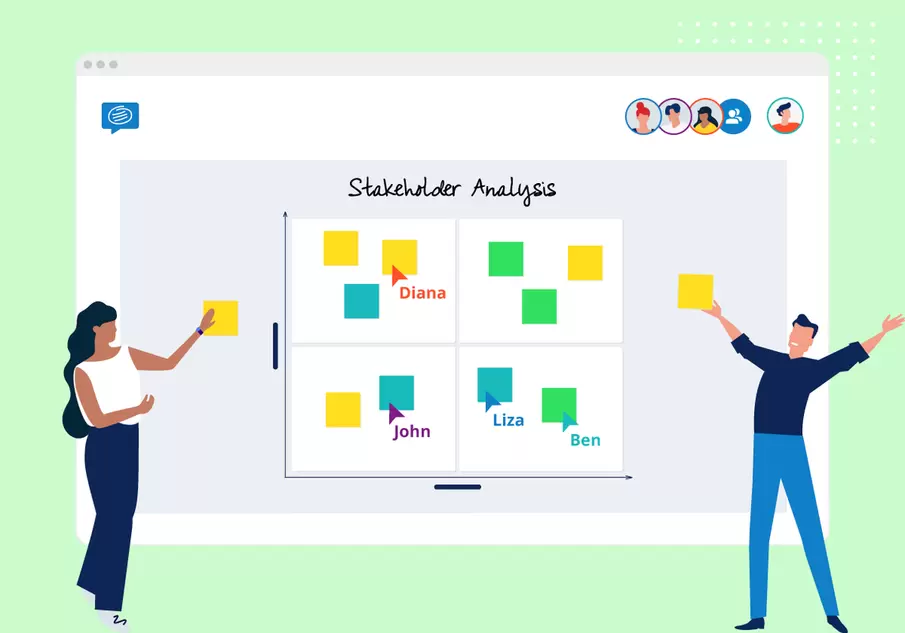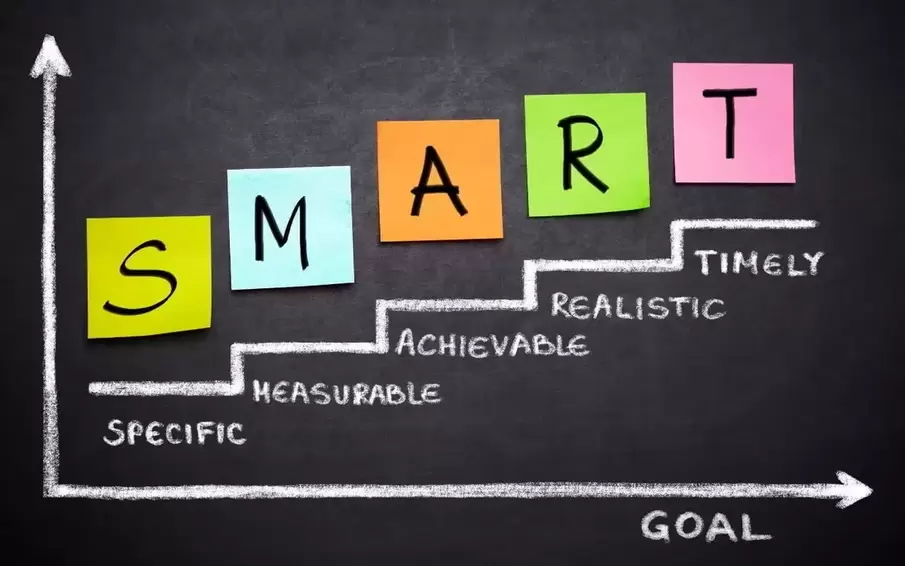It’s Monday morning and Ashley arrives at the office with a fresh cup of coffee in hand, ready to start her workweek as a business analyst at a successful tech company. She has a full day ahead, packed with back-to-back meetings and project planning sessions.
Ashley’s first meeting is with the product team to analyze new feature requests for their mobile app. Next, she’ll be sitting down with the marketing team to help map out their strategy for the upcoming holiday season. In the afternoon, it’s time to connect with the executives to provide decision-support data and recommendations for a potential expansion plan.
Just another typical day for a business analyst, playing the role of researcher, planner, communicator and problem-solver across the organization.
The business analyst role is diverse and pivotal for organizational success, touching every department and project from start to finish. This comprehensive guide will decode exactly what business analysts do, the skills that make them excel, and how they drive value through collaboration, analysis and communication.
Defining the Business Analyst Role
A business analyst is responsible for bridging the gap between business needs and technological solutions. Their core role involves understanding business objectives, analyzing processes, and determining solutions that enable the organization to meet its goals.
The specific responsibilities may vary depending on the industry, company size and business priorities. However, some typical tasks and deliverables include:
- Gathering requirements from stakeholders through interviews, workshops and surveys.
- Analyzing current processes and systems to identify areas for optimization.
- Modelling business processes using methods like flowcharts and swimlanes.
- Performing cost-benefit analysis on potential solutions.
- Documenting and communicating requirements through methods like user stories and functional specifications.
- Supporting implementation and user testing of new systems and processes.
- Tracking relevant metrics and KPIs related to solutions.
- Managing requirements and solutions using tools like JIRA or Trello.
- Providing ongoing training, support and change management.
The business analyst acts as the bridge between the business side focused on problems and needs, and the technical side responsible for system delivery and implementation. They ensure solutions meet business objectives and provide value.
Key Skills and Competencies

To be successful in the multifaceted business analyst role requires both soft skills and specialized technical competencies. Here are some of the most essential:
Communication Skills: Business analysts need excellent written and verbal communication abilities to collaborate with both business and technical teams. Presentation skills allow effective demonstration of data, processes and recommendations.
Analytical Thinking: Strong analytical skills help business analysts model processes, analyze data, assess solutions and weigh tradeoffs. Logic, critical thinking and problem-solving enable impactful recommendations.
Technical Knowledge: Business analysts should have working knowledge of modelling tools and techniques. An understanding of software development lifecycles, databases and testing strategies is also important.
Business Acumen: Deep insight into the organization’s business, industry, systems and objectives helps drive optimal analysis and decision-making. Background in business functions like finance, marketing and operations is useful.
Interpersonal Skills: The ability to build relationships, manage stakeholder expectations and lead requirements workshops promotes effective team collaboration. Empathy, active listening and facilitation skills are essential.
Organization: Juggling multiple projects and effectively managing requirements demands excellent organizational abilities. Attention to detail is also key when creating process documentation.
Let’s look at a real-world example highlighting the importance of these business analyst competencies:
Sonia is leading a project to implement a new CRM system. Strong analytical thinking helps her objectively evaluate different solution options against business needs. Communication and interpersonal skills allow her to lead engaging workshops to gather user requirements across departments. Sonia’s technical knowledge is critical during implementation planning discussions with the development team. Her business acumen ensures the solution delivers value and ROI for the organization.
Collaboration with Stakeholders

One of the most important aspects of the business analyst role is collaborating with stakeholders across the organization. BAs act as the conduit between different teams, facilitating discussions to ensure everyone’s needs are met.
Stakeholders can include:
- Executive leadership – provide strategic objectives and make final decisions on solutions.
- Line managers – manage business departments and oversee employees using solutions.
- Operations teams – handle day-to-day business processes that may be impacted.
- Users – interact with systems and processes under analysis.
- Project managers – coordinate timelines and resources for initiatives.
- Developers – responsible for technical implementation of solutions.
Effective stakeholder management allows business analysts to gain insights, discuss challenges openly, and arrive at solutions accepted by all parties. Key strategies include:
- Conducting thorough stakeholder analysis to identify interests and influence.
- Building partnerships and managing expectations from the start.
- Customizing communications for each stakeholder’s needs and priorities.
- Scheduling regular meetings, workshops and project reviews.
- Resolving conflicts and mediating differences across groups.
- Celebrating wins and milestones to maintain engagement.
Let’s examine a scenario highlighting collaboration in action:
Andre is overseeing a project to improve order processing efficiency. He creates a stakeholder map identifying the COO and Operations Manager as primary stakeholders with high influence. He conducts in-depth interviews to understand pain points. In workshops, Andre brings the managers and order processing clerks together to brainstorm improvements. He continues facilitating open communication across the teams during solution design discussions. The result is an optimized process and rollout plan endorsed by all parties.
This example demonstrates how stakeholder collaboration ultimately leads to better solutions. Business analysts should prioritize relationship-building as a key to success.
Analyzing Business Requirements

One of the business analyst’s primary responsibilities is gathering and analyzing business requirements for their projects. This process involves understanding stakeholder needs, current processes, pain points and desired outcomes.
Common requirements analysis activities include:
Planning: Defining the scope, goals, stakeholders and timeline for requirements activities.
Interviews: Holding detailed discussions with individual stakeholders to uncover needs.
Workshops: Facilitating focused sessions for groups to openly discuss processes and solutions.
Surveys: Distributing questionnaires to gather input from large stakeholder groups.
Observations: Documenting existing processes first-hand by shadowing users.
Document Analysis: Reviewing existing process documentation, performance data and specifications.
User Stories: Capturing requirements from the user’s perspective in simple, concise statements.
Use Cases: Detailing the expected step-by-step interactions between a user and a system.
Process Modeling: Mapping current workflows using methods like flowcharts, data flow diagrams or BPMN.
Throughout requirements gathering, the business analyst utilizes active listening, probing questions and visualization tools to extract complete, accurate information. The end goal is compiling detailed documentation on “what” the solutions should achieve based on business needs.
Data Analysis and Decision Support

Today’s organizations increasingly rely on data to drive strategic decisions. Business analysts play a key role in compiling data and translating it into meaningful insights to inform planning.
Common data analysis responsibilities include:
- Identifying metrics and KPIs to quantify performance goals.
- Extracting data from sources like CRM systems, web analytics, financial reports and operational databases.
- Organizing and modelling data to uncover patterns and trends.
- Performing analysis using methods like data mining, regression analysis and predictive modelling.
- Summarizing insights through data visualizations, reports and dashboards.
- Making data-driven recommendations to optimize processes and solutions.
- Monitoring KPIs to track solution performance post-implementation.
Let’s look at an example:
Tyler, a business analyst at an e-commerce company, has created dashboards displaying website traffic and conversion rates over the past year. He noticed a spike in traffic during holiday sales did not match a rise in conversions. Tyler digs deeper and analyzes advertising costs, finding an ineffective campaign that caused the increase. Based on these insights, he recommends an optimized promotional budget for next year’s holiday season.
Facilitating Communication
During complex projects with many moving parts, communication breakdowns can easily occur. Business analysts play an integral role in keeping everyone on the same page by facilitating discussions and aligning perspectives.
Communication tasks business analysts undertake include:
- Leading requirements workshops and design sessions with mixed groups.
- Providing clear project updates to executives, sponsors and stakeholders.
- Translating complex technical details into digestible language for business teams.
- Creating visual models and mockups to illustrate requirements or processes.
- Mediating disputes or misunderstandings between groups.
- Securing buy-in across departments for process changes.
- Developing training materials and conducting training on new systems.
- Celebrating and communicating wins to project teams.
Effective communication ensures stakeholders are continuously engaged. It also helps manage conflicts before they escalate into major issues. Overall, the business analyst serves as the “go-to” for project status and guidance.
Adapting to Change and Continuous Improvement
In dynamic business environments, change is a given. As organizations pivot to meet evolving needs, business analysts play a key role in navigating uncertainty and driving continuous improvement.
Key skills that help business analysts adapt include:
Flexibility – The ability to modify analyses and recommendations as situations change. Being open to new processes and solutions.
Creativity – Using innovative thinking to view challenges in new ways. Bringing fresh perspectives to intractable issues.
Agility – Responding efficiently to shifting priorities and requirements. Rapidly adjusting project plans and activities accordingly.
Resilience – Rebounding after setbacks or rejected ideas. Seeing failures as learning opportunities.
Proactivity – Getting ahead of upcoming changes through scenario planning. Identifying future process improvements proactively.
Curiosity – Asking insightful questions. Constantly seeking ways to enhance solutions and provide more business value.
Business analysts who embody these traits thrive amidst uncertainty while propelling their organizations forward. They turn change into a competitive advantage.
Elaborating on Core Responsibilities:
- Requirements elicitation – This goes beyond just gathering requirements. Business analysts need to use active listening, strategic questioning and empathy to draw out stakeholders’ true needs.
- Process modelling – Models like flowcharts, value stream maps and swimlane diagrams are critical for visualizing current processes and identifying improvement opportunities. Business analysts need expertise in various modelling techniques.
- User experience analysis – Understand end-user behaviours and challenges to optimize usability. Can involve methods like user surveys, personas, and journey mapping.
- Business case development – Building compelling cases for solutions requiring investment. Quantifying costs, benefits and ROI.
- Risk analysis – Identifying implementation risks and mitigation strategies. Assessing risk probability, impact and overall exposure.
Key Technical Skills:
- Data modelling and SQL skills for understanding database design and extracting data
- Proficiency in process modelling tools like Visio, LucidChart or Bizagi
- Working knowledge of programming and scripting languages to analyze software capabilities
- Understanding of data science and visualization principles to effectively analyze and present data insights
Soft Skills and Attributes:
- Leadership – move into team lead or head of BA roles requiring vision and team development
- Influencing – appropriately persuade others and negotiate win-win solutions
- Strategic mindset – ability to link solutions to business strategy and priorities
- Innovation – continually striving to improve the status quo and add business value
- Teaching ability – train others on new processes and systems
Career Growth and Development:
- Rotating through different business units to diversify industry experience
- Seeking opportunities to lead larger, more strategic initiatives
- Obtaining advanced education like an MBA to broaden business knowledge
- Volunteering to mentor new business analysts
- Joining internal change agent and transformation teams
Conclusion
From gathering and analyzing business needs to providing data-driven recommendations, business analysts are instrumental in turning strategic objectives into reality. They utilize a diverse range of technical and soft skills to understand problems, arrive at solutions, and enable organizational success.
While every day may look a little different, top business analysts approach their work with curiosity, analytical thinking, and unwavering commitment to delivering business value. They forge trusted relationships, communicate complex information effectively, and navigate change with dexterity.
Looking to make an impact through technology-driven business improvements? A career as a business analyst may be the perfect path forward. With persistence and the right blend of technical and interpersonal abilities, you can thrive in this rewarding role.




